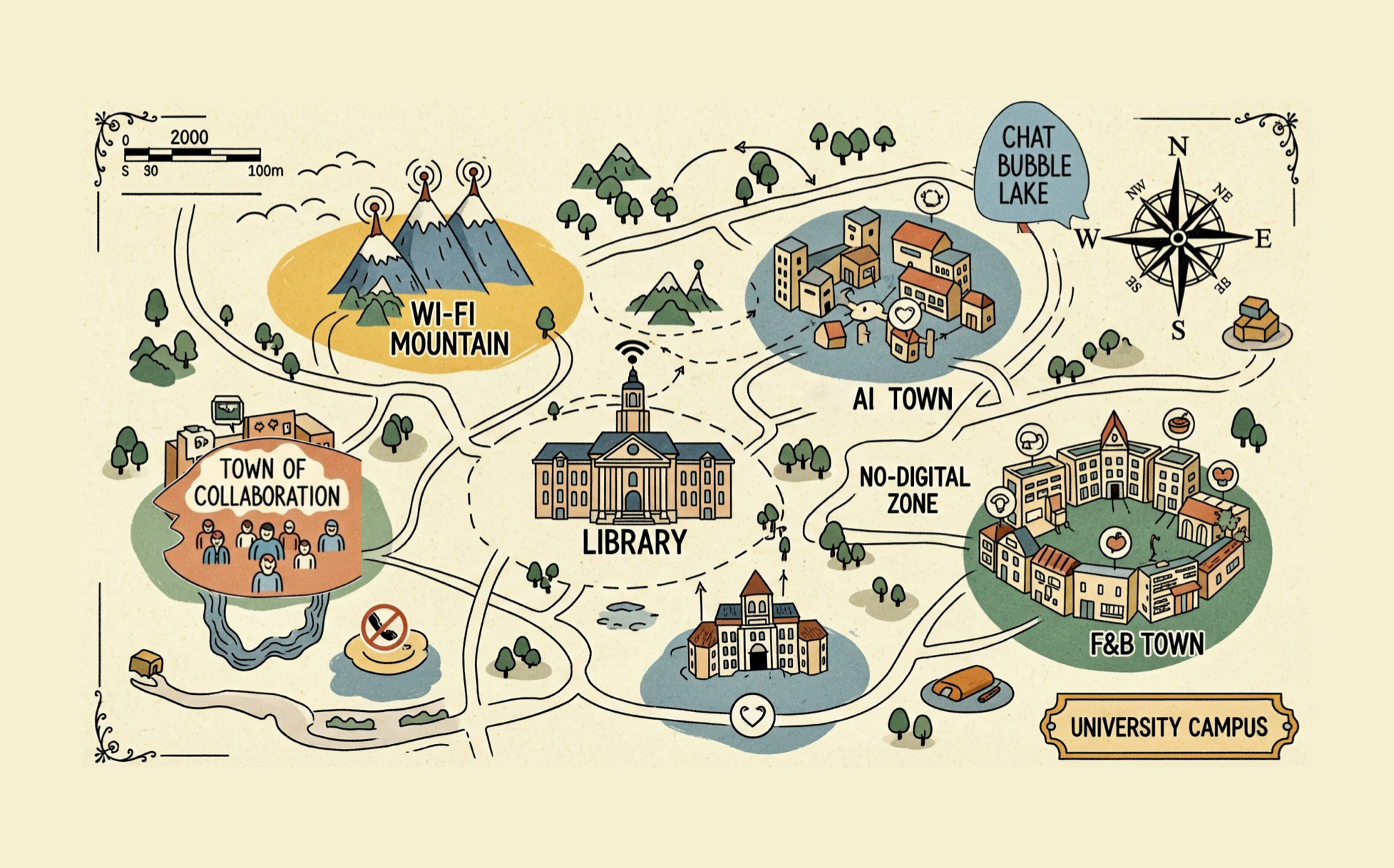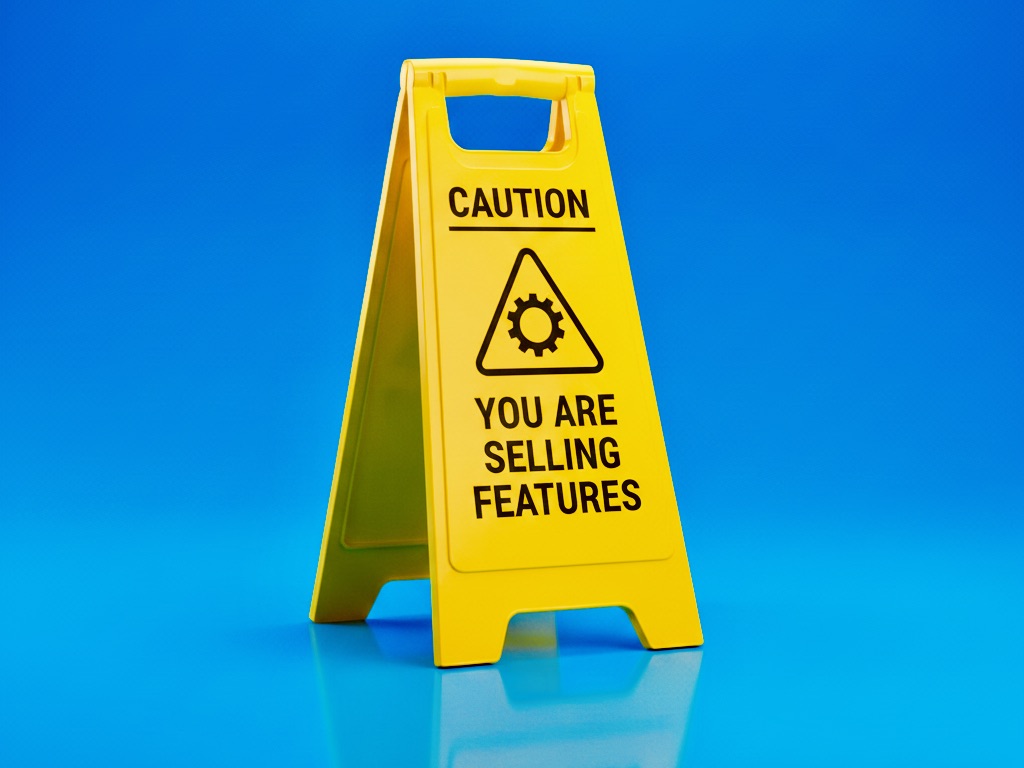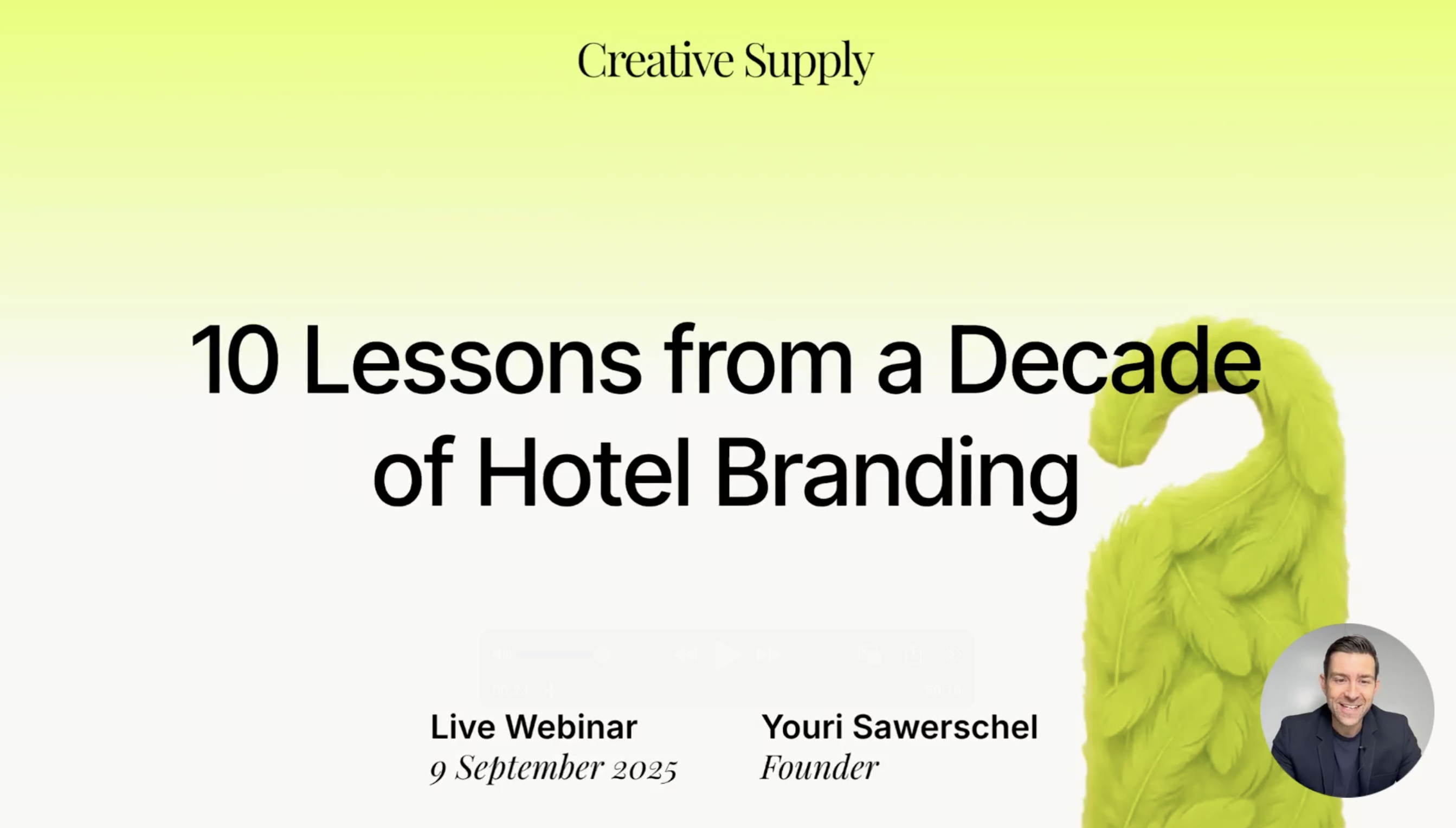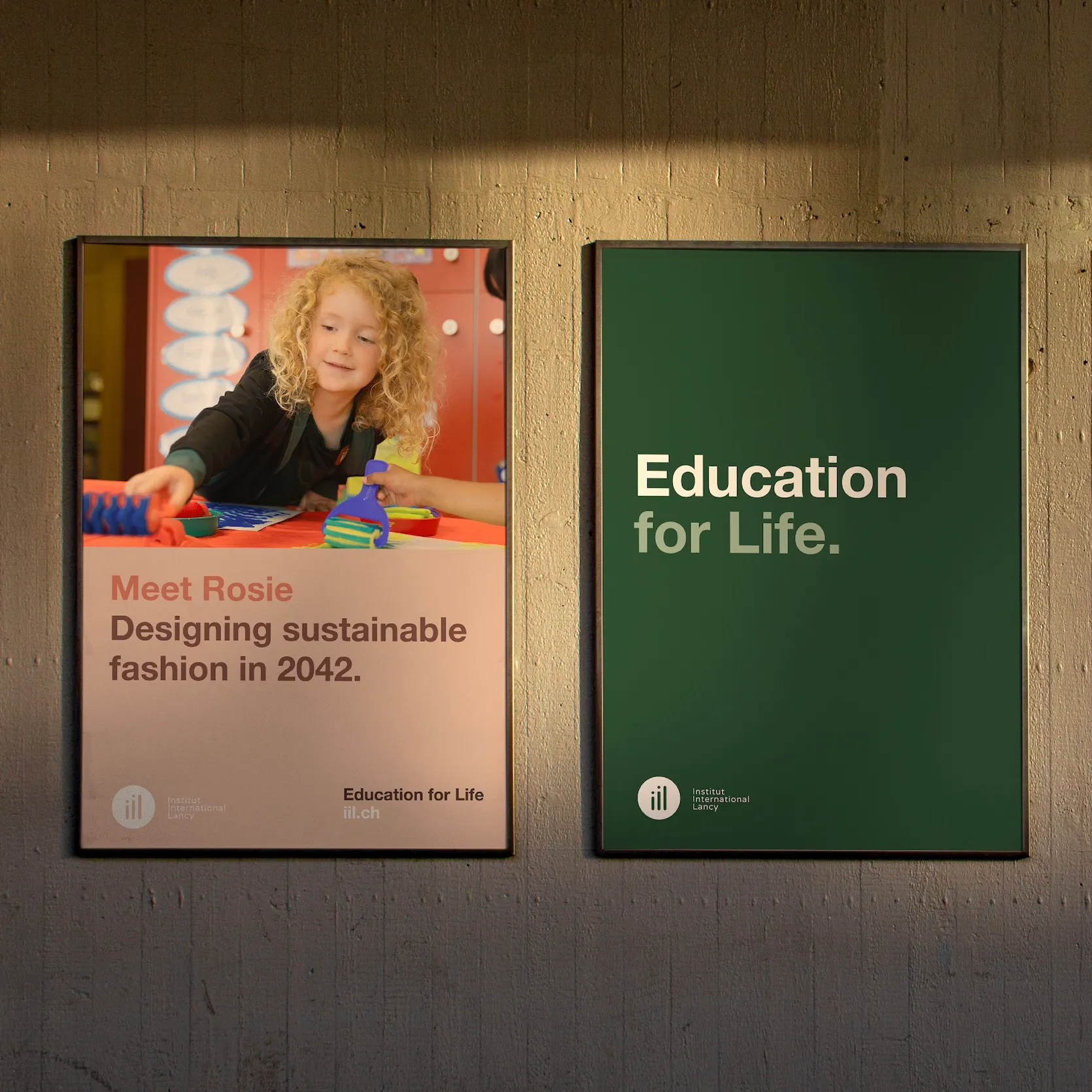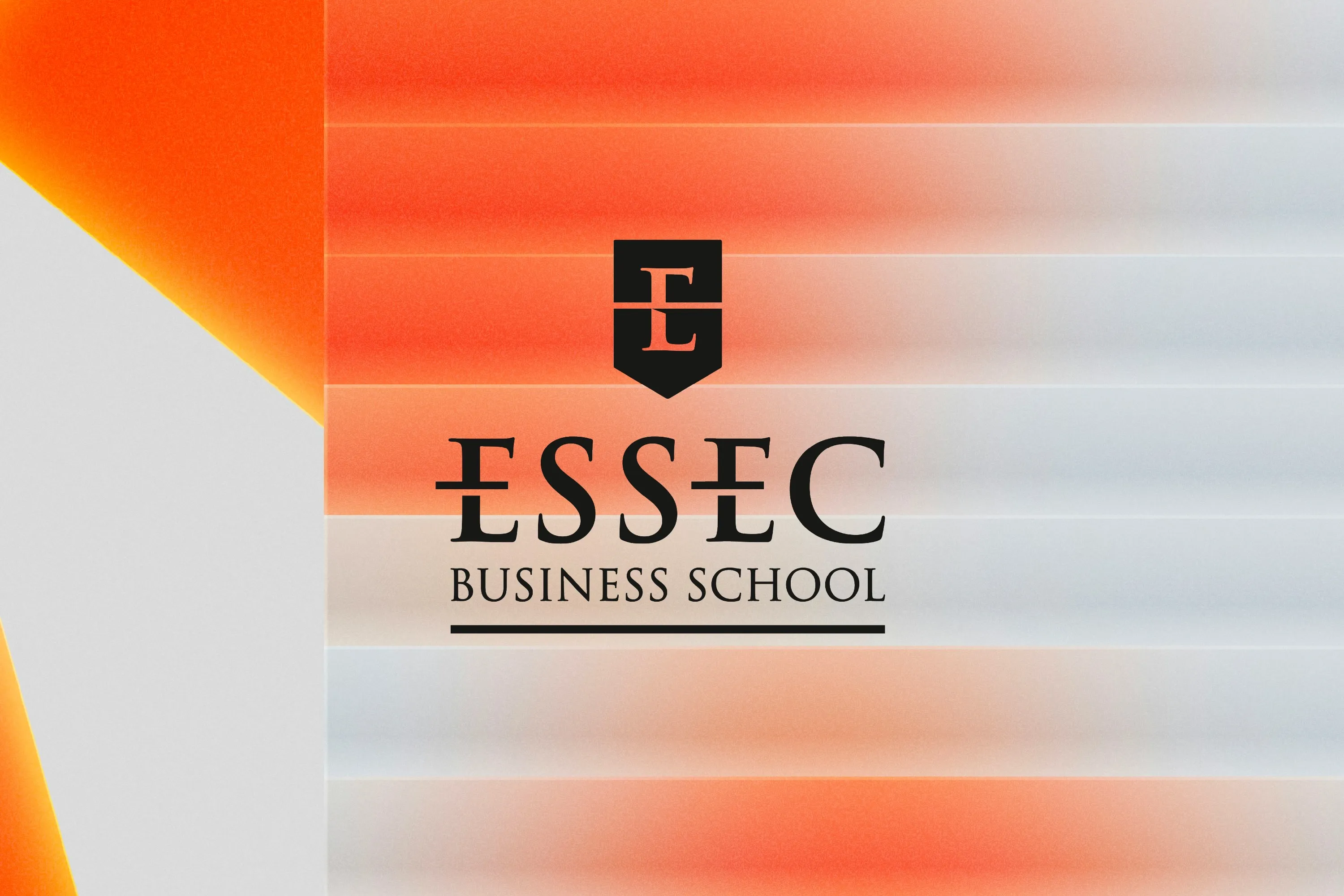Is Education a Product? The Rise of Branding in Education
Brand creation is rapidly gaining traction in the education sector, from international schools and executive education to continuous learning platforms. Once considered immune to the pressures of marketing, educational institutions are now recognising the strategic value of branding, campus experience, and digital design to attract students.

In the past, “selling” or “differentiating” wasn’t really on the minds of educational institutions in Switzerland or elsewhere. Student applications flowed in steadily, competition was largely local, and reputation grew organically. Today, new forms of competition are forcing even the most traditional institutions to take on a more marketing-oriented approach.
The learning curve is steep. Education has long been considered “marketing-proof”, built on academic integrity, not branding tactics. Yet those who embrace branding as a growth driver are finding new opportunities to differentiate and increase relevance.
We spoke with three Swiss education leaders to understand the shift: Lynn Strebel, Jérôme de Meyer, and Michael A. Grund.
A Shifting Academic Landscape
Switzerland boasts more than 70 private institutions, the world’s highest per capita concentration of top-tier universities (ARTU Top 200), and an academic heritage dating back to the 15th century. Switzerland has long been an academic utopia. Today's market reality is not at all like it used to be.
Lynn Strebel, Managing Director of Academia Education, sees digitalisation as a game-changer. “The invisible walls surrounding Switzerland will fall at some point” she says. With global online degrees from institutions like LSE or MIT, a professional in Geneva has nearly unlimited choice.
According to Strebel, the competition is twofold: on one hand, the geographic catchment area has expanded. On the other, the barriers to entry are shrinking.
“Any freelancer with a website can now position themselves as a training institute” says Strebel.

When a Curriculum Is Not Enough
In such a competitive environment, private schools and universities, language schools and professional training programs, all share a common goal: to stand out from the crowd and get the attention of candidates. Differentiation can come in different forms: location, amenities, and education quality. But are these really enough to distinguish them today?
As Jérôme de Meyer, President of Beau Soleil and Nord Anglia Education Switzerland, notes: “Quality of education when following a national or international curriculum is a prerequisite for all schools, but it’s not what makes the difference or positions a school successfully.” The most successful educational institutions craft a brand based on both tangible and intangible factors, aiming to create a strong mental image in the minds of students, parents, and partners.
“A school must represent something meaningful in people’s minds.” according to Michael A. Grund, Head of Marketing at HWZ Zurich. That “something” is brand creation.
Balancing Ethics with Branding
Having a brand allows educational institutions to avoid direct comparisons with the competition. Harvard is the university of the world’s elite. Universität St. Gallen is the university of the business world in the DACH region (Germany-Austria-Switzerland). The Ecole Hotelière de Lausanne is the world’s leading hospitality university. Their brand positioning is based on academic, geographical and historical realities. Once the positioning is in place, the brand benefits from an intrinsic value that no longer needs to be proven. Former Harvard goers actually speak of “dropping the H-bomb” in reference to the potency of mentioning the school’s brand. Michael A. Grund confirms: "It is common for students to give a lot of weight to an institution’s brand in their selection process.”
Nonetheless, the education sector is reluctant to move toward a more brand-driven approach. As per Jérôme de Meyer, “in a competitive environment, branding talk is more and more accepted even if there is still some sensitivity”. The challenge is in striking a balance between ethical responsibility and marketing purpose. Educational institutions must not use branding as a façade to mask shortcomings in teaching or research — credibility is built from the inside out.
So what is the right approach?
Here are 3 cornerstones that can help you form your brand strategy and design when creating an authentic education brand:
1. Contextualisation through Storytelling
“{The importance} of word of mouth hasn’t changed in 30 years” explains Lynn Strebel, despite the rise of social networks. Developing a brand story (often called storytelling) is essential for fuelling word of mouth. Successful storytelling builds ties between otherwise distant facts, and that contextualisation is what makes it so effective, memorable and transmittable.
Creative Supply’s work for EPFL EMBA demonstrates the power of storytelling. Touching on the narrowing gap between technology and business, the program underlines the importance of new managerial skills and legitimises the EPFL’s role in educating the leaders of tomorrow. Rather than merely listing off their various assets, the EPFL EMBA contextualised their program by telling a story that appeals to a broad audience of applicants and their employers.
The new narrative approach,“Become an Innovation Leader with EPFL”, combined with the redesign of the brand visual identity, sparked a 47% increase in applicants.
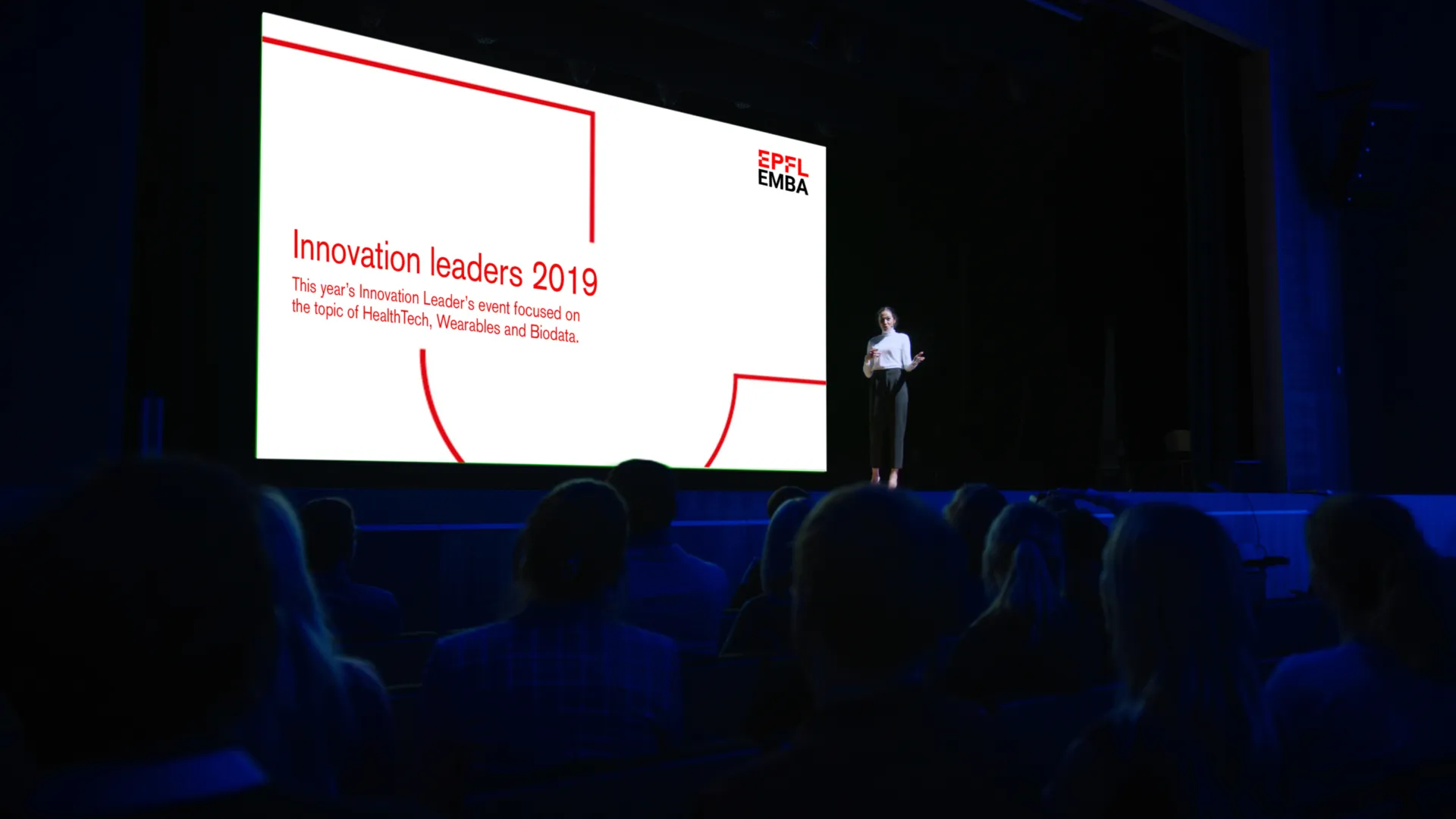
2. Adapting to Diverse Audiences
Private schools and universities need to win over both the parents and the children, while continuous learning programs target employers and employees. This duality is key for many establishments. Jérôme de Meyer explains that “selling points for parents focus on the long term, while for the kids, the short term prevails. Parents want to ensure a sound future for their children. Kids want all the extracurriculars and an attractive social life”. Storytelling should thus be adjustable to various audiences.
Take OLOS, a Swiss research data platform positioned by Creative Supply as a guardian of data sovereignty. It is a great example of story adjustability. For researchers, the appeal is usability. For universities, it’s server reliability. Strategic messaging must flex across audience needs without losing coherence.
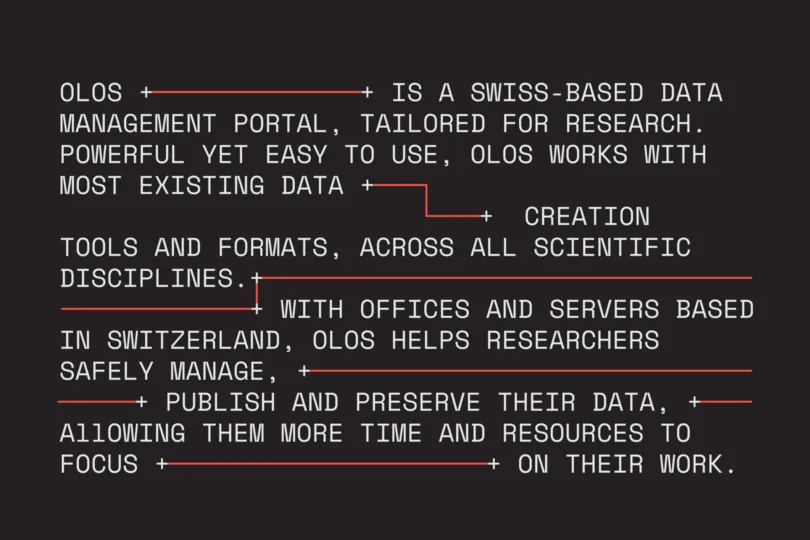
3. Building a Brand Image
Storytelling matters. But visual storytelling makes it stick.
The prominence of visual media is on a constant rise, meaning it’s in the best interest of learning institutions to nurture their visual presentation. Yet the visual identities of most educational institutions fall back on clichés, using the same formula: a picture of a smiling student alongside a generic slogan in a handwriting font.
Institut International de Lancy (IIL) in Geneva is a refreshing exception. In partnership with Creative Supply, IIL launched a marketing campaign featuring a series of mini-stories with original illustrations, student portraits, and short-form copy about future careers in science, tech, and sustainability — careers that reflect the school’s educational priorities: sciences, technology, the environment and international cooperation.
The result was a compelling visual narrative aligned with the brand promise: “Education for Life.” This is where brand strategy unites with brand design.

The Competitive Advantage of Branding in Education
More forward-thinking educational institutions will see brand creation as a golden opportunity to grow their media outreach, attract talents and raise tuition to fund more research activities. Those more reluctant, however, will do whatever it takes not to give into the branding game, and condemn their peers for becoming “too commercial”. Ironically enough, resistance is a brand story in itself: “the traditional institution that swears only by the quality of its curriculum”.
Ultimately, the most compelling story wins.
Looking to Refresh Your Education Brand?
At Creative Supply, we help educational institutions build distinctive brand identities and experiences that prepare them for the future.
👉 Contact us to discuss how we can help to take your education brand to the next level.
Is Education a Product? The Rise of Branding in Education

In the past, “selling” or “differentiating” wasn’t really on the minds of educational institutions in Switzerland or elsewhere. Student applications flowed in steadily, competition was largely local, and reputation grew organically. Today, new forms of competition are forcing even the most traditional institutions to take on a more marketing-oriented approach.
The learning curve is steep. Education has long been considered “marketing-proof”, built on academic integrity, not branding tactics. Yet those who embrace branding as a growth driver are finding new opportunities to differentiate and increase relevance.
We spoke with three Swiss education leaders to understand the shift: Lynn Strebel, Jérôme de Meyer, and Michael A. Grund.
A Shifting Academic Landscape
Switzerland boasts more than 70 private institutions, the world’s highest per capita concentration of top-tier universities (ARTU Top 200), and an academic heritage dating back to the 15th century. Switzerland has long been an academic utopia. Today's market reality is not at all like it used to be.
Lynn Strebel, Managing Director of Academia Education, sees digitalisation as a game-changer. “The invisible walls surrounding Switzerland will fall at some point” she says. With global online degrees from institutions like LSE or MIT, a professional in Geneva has nearly unlimited choice.
According to Strebel, the competition is twofold: on one hand, the geographic catchment area has expanded. On the other, the barriers to entry are shrinking.
“Any freelancer with a website can now position themselves as a training institute” says Strebel.

When a Curriculum Is Not Enough
In such a competitive environment, private schools and universities, language schools and professional training programs, all share a common goal: to stand out from the crowd and get the attention of candidates. Differentiation can come in different forms: location, amenities, and education quality. But are these really enough to distinguish them today?
As Jérôme de Meyer, President of Beau Soleil and Nord Anglia Education Switzerland, notes: “Quality of education when following a national or international curriculum is a prerequisite for all schools, but it’s not what makes the difference or positions a school successfully.” The most successful educational institutions craft a brand based on both tangible and intangible factors, aiming to create a strong mental image in the minds of students, parents, and partners.
“A school must represent something meaningful in people’s minds.” according to Michael A. Grund, Head of Marketing at HWZ Zurich. That “something” is brand creation.
Balancing Ethics with Branding
Having a brand allows educational institutions to avoid direct comparisons with the competition. Harvard is the university of the world’s elite. Universität St. Gallen is the university of the business world in the DACH region (Germany-Austria-Switzerland). The Ecole Hotelière de Lausanne is the world’s leading hospitality university. Their brand positioning is based on academic, geographical and historical realities. Once the positioning is in place, the brand benefits from an intrinsic value that no longer needs to be proven. Former Harvard goers actually speak of “dropping the H-bomb” in reference to the potency of mentioning the school’s brand. Michael A. Grund confirms: "It is common for students to give a lot of weight to an institution’s brand in their selection process.”
Nonetheless, the education sector is reluctant to move toward a more brand-driven approach. As per Jérôme de Meyer, “in a competitive environment, branding talk is more and more accepted even if there is still some sensitivity”. The challenge is in striking a balance between ethical responsibility and marketing purpose. Educational institutions must not use branding as a façade to mask shortcomings in teaching or research — credibility is built from the inside out.
So what is the right approach?
Here are 3 cornerstones that can help you form your brand strategy and design when creating an authentic education brand:
1. Contextualisation through Storytelling
“{The importance} of word of mouth hasn’t changed in 30 years” explains Lynn Strebel, despite the rise of social networks. Developing a brand story (often called storytelling) is essential for fuelling word of mouth. Successful storytelling builds ties between otherwise distant facts, and that contextualisation is what makes it so effective, memorable and transmittable.
Creative Supply’s work for EPFL EMBA demonstrates the power of storytelling. Touching on the narrowing gap between technology and business, the program underlines the importance of new managerial skills and legitimises the EPFL’s role in educating the leaders of tomorrow. Rather than merely listing off their various assets, the EPFL EMBA contextualised their program by telling a story that appeals to a broad audience of applicants and their employers.
The new narrative approach,“Become an Innovation Leader with EPFL”, combined with the redesign of the brand visual identity, sparked a 47% increase in applicants.

2. Adapting to Diverse Audiences
Private schools and universities need to win over both the parents and the children, while continuous learning programs target employers and employees. This duality is key for many establishments. Jérôme de Meyer explains that “selling points for parents focus on the long term, while for the kids, the short term prevails. Parents want to ensure a sound future for their children. Kids want all the extracurriculars and an attractive social life”. Storytelling should thus be adjustable to various audiences.
Take OLOS, a Swiss research data platform positioned by Creative Supply as a guardian of data sovereignty. It is a great example of story adjustability. For researchers, the appeal is usability. For universities, it’s server reliability. Strategic messaging must flex across audience needs without losing coherence.

3. Building a Brand Image
Storytelling matters. But visual storytelling makes it stick.
The prominence of visual media is on a constant rise, meaning it’s in the best interest of learning institutions to nurture their visual presentation. Yet the visual identities of most educational institutions fall back on clichés, using the same formula: a picture of a smiling student alongside a generic slogan in a handwriting font.
Institut International de Lancy (IIL) in Geneva is a refreshing exception. In partnership with Creative Supply, IIL launched a marketing campaign featuring a series of mini-stories with original illustrations, student portraits, and short-form copy about future careers in science, tech, and sustainability — careers that reflect the school’s educational priorities: sciences, technology, the environment and international cooperation.
The result was a compelling visual narrative aligned with the brand promise: “Education for Life.” This is where brand strategy unites with brand design.

The Competitive Advantage of Branding in Education
More forward-thinking educational institutions will see brand creation as a golden opportunity to grow their media outreach, attract talents and raise tuition to fund more research activities. Those more reluctant, however, will do whatever it takes not to give into the branding game, and condemn their peers for becoming “too commercial”. Ironically enough, resistance is a brand story in itself: “the traditional institution that swears only by the quality of its curriculum”.
Ultimately, the most compelling story wins.
Looking to Refresh Your Education Brand?
At Creative Supply, we help educational institutions build distinctive brand identities and experiences that prepare them for the future.
👉 Contact us to discuss how we can help to take your education brand to the next level.


Is Education a Product? The Rise of Branding in Education
Brand creation is rapidly gaining traction in the education sector, from international schools and executive education to continuous learning platforms. Once considered immune to the pressures of marketing, educational institutions are now recognising the strategic value of branding, campus experience, and digital design to attract students.
In the past, “selling” or “differentiating” wasn’t really on the minds of educational institutions in Switzerland or elsewhere. Student applications flowed in steadily, competition was largely local, and reputation grew organically. Today, new forms of competition are forcing even the most traditional institutions to take on a more marketing-oriented approach.
The learning curve is steep. Education has long been considered “marketing-proof”, built on academic integrity, not branding tactics. Yet those who embrace branding as a growth driver are finding new opportunities to differentiate and increase relevance.
We spoke with three Swiss education leaders to understand the shift: Lynn Strebel, Jérôme de Meyer, and Michael A. Grund.
A Shifting Academic Landscape
Switzerland boasts more than 70 private institutions, the world’s highest per capita concentration of top-tier universities (ARTU Top 200), and an academic heritage dating back to the 15th century. Switzerland has long been an academic utopia. Today's market reality is not at all like it used to be.
Lynn Strebel, Managing Director of Academia Education, sees digitalisation as a game-changer. “The invisible walls surrounding Switzerland will fall at some point” she says. With global online degrees from institutions like LSE or MIT, a professional in Geneva has nearly unlimited choice.
According to Strebel, the competition is twofold: on one hand, the geographic catchment area has expanded. On the other, the barriers to entry are shrinking.
“Any freelancer with a website can now position themselves as a training institute” says Strebel.

When a Curriculum Is Not Enough
In such a competitive environment, private schools and universities, language schools and professional training programs, all share a common goal: to stand out from the crowd and get the attention of candidates. Differentiation can come in different forms: location, amenities, and education quality. But are these really enough to distinguish them today?
As Jérôme de Meyer, President of Beau Soleil and Nord Anglia Education Switzerland, notes: “Quality of education when following a national or international curriculum is a prerequisite for all schools, but it’s not what makes the difference or positions a school successfully.” The most successful educational institutions craft a brand based on both tangible and intangible factors, aiming to create a strong mental image in the minds of students, parents, and partners.
“A school must represent something meaningful in people’s minds.” according to Michael A. Grund, Head of Marketing at HWZ Zurich. That “something” is brand creation.
Balancing Ethics with Branding
Having a brand allows educational institutions to avoid direct comparisons with the competition. Harvard is the university of the world’s elite. Universität St. Gallen is the university of the business world in the DACH region (Germany-Austria-Switzerland). The Ecole Hotelière de Lausanne is the world’s leading hospitality university. Their brand positioning is based on academic, geographical and historical realities. Once the positioning is in place, the brand benefits from an intrinsic value that no longer needs to be proven. Former Harvard goers actually speak of “dropping the H-bomb” in reference to the potency of mentioning the school’s brand. Michael A. Grund confirms: "It is common for students to give a lot of weight to an institution’s brand in their selection process.”
Nonetheless, the education sector is reluctant to move toward a more brand-driven approach. As per Jérôme de Meyer, “in a competitive environment, branding talk is more and more accepted even if there is still some sensitivity”. The challenge is in striking a balance between ethical responsibility and marketing purpose. Educational institutions must not use branding as a façade to mask shortcomings in teaching or research — credibility is built from the inside out.
So what is the right approach?
Here are 3 cornerstones that can help you form your brand strategy and design when creating an authentic education brand:
1. Contextualisation through Storytelling
“{The importance} of word of mouth hasn’t changed in 30 years” explains Lynn Strebel, despite the rise of social networks. Developing a brand story (often called storytelling) is essential for fuelling word of mouth. Successful storytelling builds ties between otherwise distant facts, and that contextualisation is what makes it so effective, memorable and transmittable.
Creative Supply’s work for EPFL EMBA demonstrates the power of storytelling. Touching on the narrowing gap between technology and business, the program underlines the importance of new managerial skills and legitimises the EPFL’s role in educating the leaders of tomorrow. Rather than merely listing off their various assets, the EPFL EMBA contextualised their program by telling a story that appeals to a broad audience of applicants and their employers.
The new narrative approach,“Become an Innovation Leader with EPFL”, combined with the redesign of the brand visual identity, sparked a 47% increase in applicants.

2. Adapting to Diverse Audiences
Private schools and universities need to win over both the parents and the children, while continuous learning programs target employers and employees. This duality is key for many establishments. Jérôme de Meyer explains that “selling points for parents focus on the long term, while for the kids, the short term prevails. Parents want to ensure a sound future for their children. Kids want all the extracurriculars and an attractive social life”. Storytelling should thus be adjustable to various audiences.
Take OLOS, a Swiss research data platform positioned by Creative Supply as a guardian of data sovereignty. It is a great example of story adjustability. For researchers, the appeal is usability. For universities, it’s server reliability. Strategic messaging must flex across audience needs without losing coherence.

3. Building a Brand Image
Storytelling matters. But visual storytelling makes it stick.
The prominence of visual media is on a constant rise, meaning it’s in the best interest of learning institutions to nurture their visual presentation. Yet the visual identities of most educational institutions fall back on clichés, using the same formula: a picture of a smiling student alongside a generic slogan in a handwriting font.
Institut International de Lancy (IIL) in Geneva is a refreshing exception. In partnership with Creative Supply, IIL launched a marketing campaign featuring a series of mini-stories with original illustrations, student portraits, and short-form copy about future careers in science, tech, and sustainability — careers that reflect the school’s educational priorities: sciences, technology, the environment and international cooperation.
The result was a compelling visual narrative aligned with the brand promise: “Education for Life.” This is where brand strategy unites with brand design.

The Competitive Advantage of Branding in Education
More forward-thinking educational institutions will see brand creation as a golden opportunity to grow their media outreach, attract talents and raise tuition to fund more research activities. Those more reluctant, however, will do whatever it takes not to give into the branding game, and condemn their peers for becoming “too commercial”. Ironically enough, resistance is a brand story in itself: “the traditional institution that swears only by the quality of its curriculum”.
Ultimately, the most compelling story wins.
Looking to Refresh Your Education Brand?
At Creative Supply, we help educational institutions build distinctive brand identities and experiences that prepare them for the future.
👉 Contact us to discuss how we can help to take your education brand to the next level.
